Understanding the Average Cost of a New Bathroom
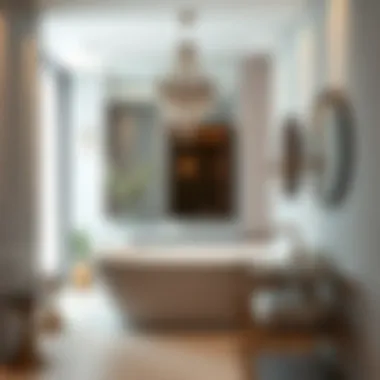
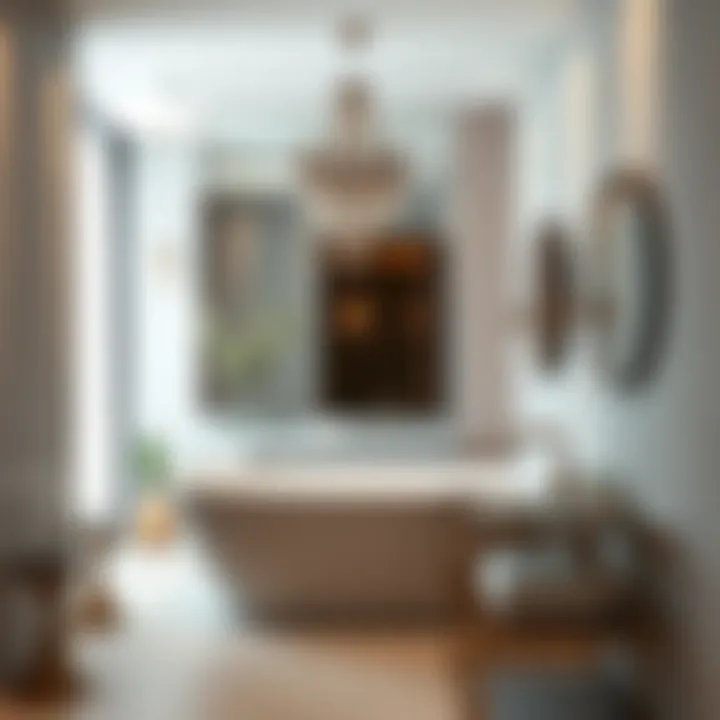
Intro
Embarking on the journey of bathroom renovation is akin to setting out on a grand adventure. However, before you dive headfirst into choosing a new tile or picking that shiny faucet, it’s crucial to understand the financial landscape. This article is intended for homeowners and housewives alike, shedding light on the average costs associated with installing a new bathroom. The discussion is not just about the price tag; it digs into the heart of what contributes to these expenses, revealing hidden insights that can help you budget wisely.
In the forthcoming sections, we will explore various aspects such as design choices, materials, labor considerations, and even those pesky regional pricing variances that can take you by surprise. This isn’t just a run-of-the-mill price breakdown; we aim to resonate with your unique vision and needs for your space.
Current Trends
Understanding what’s hot and what’s not in bathroom design can make your choices more informed. As you strive to create a space that is not just functional but also visually appealing, you will find that current trends play a significant role.
Color Palettes
These days, muted tones have taken center stage. Think soft grays, pastel blues, and earthy shades—colors that create a calming oasis. Far from the stark whites of yesteryear, these palettes provide a canvas that complements various styles, from modern minimalism to rustic charm.
Popular Styles
When it comes to design styles, the modern farmhouse aesthetic is becoming increasingly sought after. It fuses sleek lines with cozy elements—think shiplap walls paired with sleek fixtures. Additionally, the timeless appeal of vintage styles with retro tile and brass hardware gives homeowners room to express their creativity.
"Incorporating current trends can elevate not just your bathroom’s aesthetics but also its market value."
Visual Ideas
Visual inspiration can often guide your decisions. Whether you’re considering a complete overhaul or minor tweaks, a clearer image of what’s possible is invaluable.
Gallery of Styled Bathrooms and Bedrooms
Imagine scrolling through a collection that showcases everything from airy coastal themes to rich, dark wood accents. Online platforms like Pinterest and Houzz provide exceptional galleries featuring diverse styles, rich textures, and innovative layouts, allowing you to dream beyond traditional boundaries.
Before-and-After Transformations
Before-and-after stories are not only heartwarming but also enlightening. They illustrate the power of a simple redesign and how a modest budget can yield stunning results. You can often find these narratives on platforms like Instagram or real-estate blogs, showcasing real-life projects that resonate with potential buyers or inspire do-it-yourself enthusiasts.
Arming yourself with this knowledge is not just about spending; it’s about making choices that reflect both personal style and practical considerations. As we move forward, we’ll break down the nitty-gritty of costs and important factors that you’ll want to keep in mind before, during, and after your renovation.
Understanding Bathroom Renovation Costs
When considering a bathroom renovation, understanding the potential costs involved is paramount. A bathroom serves as more than just a functional space; it's a retreat—an area for relaxation and personal care. Hence, a well-planned renovation can significantly enhance both your daily experience and your property’s value. In this article, we delve into the nuances of bathroom renovation costs to equip you with the knowledge needed to make informed decisions.
The average cost of a new bathroom encompasses a variety of elements ranging from design choices to labor expenses. Knowing what's included in these costs can highlight areas where you might save or areas where investing more might yield better results. Factors like size, layout, and fixture choice come into play, and understanding these elements allows homeowners to prioritize their needs effectively.
The first step in determining your renovation budget is to grasp what constitutes bathroom renovation costs. Each detail matters, as it all adds up to the final bill.
What Constitutes Bathroom Renovation Costs?
Bathroom renovation costs primarily include materials, fixtures, and labor. Each component carries its own importance.
- Materials: The quality and type of materials chosen can swing the project cost widely. Options vary from inexpensive ceramic tiles to luxurious marble.
- Fixtures: Whether it's the sink, toilet, or shower unit, fixture prices range from budget-friendly to splurge-worthy brands. Their styles and finishes can also impact costs.
- Labor: Depending on whether you’re doing it yourself or hiring professionals, labor costs add a substantial layer to your budget. Skilled labor ensures a job well done, but it can also hike up the total.
- Additional Costs: Don’t forget to factor in plumbing or electrical upgrades if changes are made. Hidden costs often pop up unexpectedly, so it’s wise to have a contingency fund.
Factors Affecting Overall Costs
Different elements can significantly sway the final amount you will spend on your new bathroom. Among these, some stand out.
Size of the Bathroom
The size of the bathroom is a primary determinant of the renovation cost. Larger spaces naturally require more materials and therefore lead to increased overall expenses. A more expansive area may also necessitate additional plumbing and electrical work, further driving up costs. Conversely, smaller bathrooms might present challenges regarding layout and functionality, but they generally remain more budget-friendly. Homeowners might discover that while smaller allows for easier upgrades, the space constraints can complicate aesthetic decisions.
Choice of Fixtures
Your choice of fixtures can make a substantial impact on the renovation budget. Opting for standard fixtures can keep costs down, whereas designer sinks or custom vanities could significantly elevate the price tag. Furthermore, the installation of more complex fixtures such as dual-flush toilets or integrated lighting systems can also lead to increased labor costs. It's vital to find a balance between aesthetics and budget, ensuring you select fixtures that enhance both function and style in your newly designed space.
Material Selection
Material selection is another essential factor in determining overall renovation costs. Floor tiles, countertops, and cabinetry must all be taken into consideration. Premium materials will require a larger upfront investment but can enhance durability and resale value. Additionally, certain materials might require more maintenance, which can lead to costs later down the line.
Labor Costs
Labor costs are often underestimated yet play a key role in the total expenses. Hiring professionals can ensure a higher quality finish but at a price. Understanding the average rates in your region, whether they be hourly or per project, will aid in budgeting. DIY renovations may save some money but can lead to unforeseen costs if mistakes are made. Assessing your skills honestly will prevent overspending on labor if you take on more than you can handle.
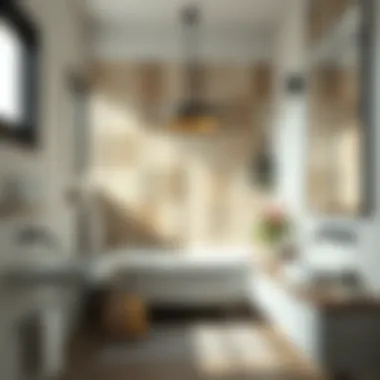
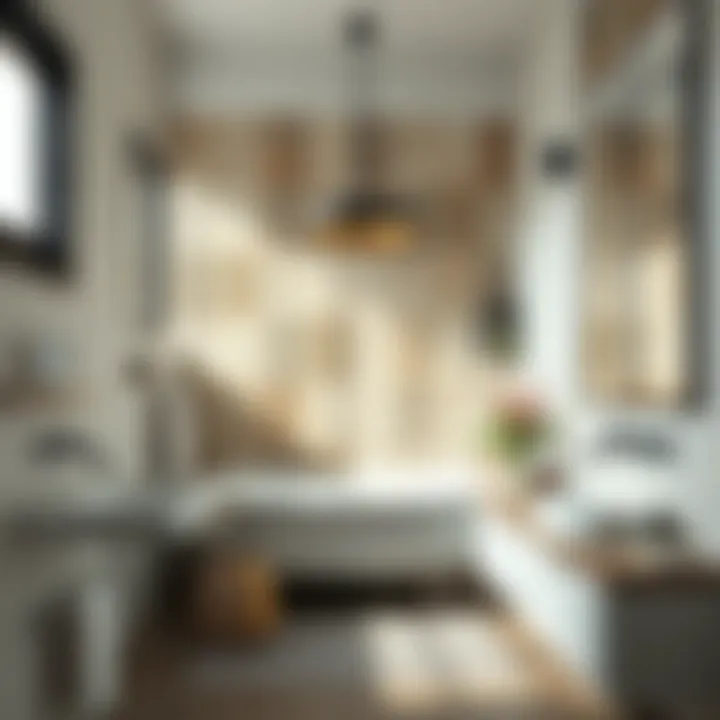
Understanding these factors is crucial. Knowledge of how various aspects influence the cost will enable you to navigate the complexities of bathroom renovations and ensure you stay within budget while achieving your desired outcome. Being equipped with insights about materials, fixtures, sizes, and labor means you're well on your way to creating the bathroom of your dreams.
Average Cost Breakdown
Understanding the average cost breakdown for a bathroom renovation is crucial for homeowners looking to maximize their budget while ensuring quality results. This section aims to demystify the expense structure associated with a new bathroom, ultimately guiding you to make informed financial decisions.
A proper grasp of costs involved can help avoid common pitfalls that may lead to unwanted surprises as the project unfolds. Here’s where you’ll see the real impact of choices regarding design, materials, and labor. Evaluating how much each element contributes to your total outlay allows you to prioritize features that matter most to you.
National Averages: What Are They?
When planning a bathroom remodel, national averages provide a valuable reference for estimating costs. These averages typically encompass a wide range of styles and finishes, giving a broad overview of what you might anticipate spending. One of the standout figures in this area is that homeowners often find themselves budgeting between $10,000 to $15,000 for a mid-range renovation. While numbers tend to vary by region, knowing this ballpark figure can help you gauge your own plans against a common standard.
A key element of assessing national averages is recognizing that they are not one-size-fits-all but rather a starting point. Factors such as local labor rates, specific design choices, and material selections can skew the average significantly. It’s prudent to collect quotes and estimates specific to your situation and locality, thereby ensuring your budget aligns with the unique aspects of your bathroom project.
Regional Variations in Cost
Variations in bathroom renovation costs significantly depend on geographical location. Understanding these discrepancies can have a direct bearing on the decisions you make in your remodel.
Urban vs. Rural Costs
Urban areas tend to command higher renovation costs compared to rural settings, largely due to increased labor rates and higher expenses for materials. In city centers, such as New York or San Francisco, renovations might soar to upwards of $25,000 for a relatively simple upgrade. Conversely, in more rural communities, you might find comparable work for $10,000 to $15,000.
This difference can be attributed to several factors, including:
- Cost of Living: Urban centers usually have a higher cost of living, which trickles down to labor and material prices.
- Availability of Materials: Rural areas may experience delays in material delivery, prompting builders to charge extra for expedited services.
- Complexity of Labor: Skilled labor can be more plentiful in cities, making it a simpler task to find competitive pricing.
However, the urban environment does offer unique opportunities for stunning designs and advanced amenities that may justify the exorbitant costs.
State-Specific Pricing Trends
Just like cities, states present their own unique cost profiles. Factors such as state taxes, local economies, and prevailing wage laws can significantly affect how much you'll spend. For example, Florida and Texas generally present lower costs for renovations due to ample supply of affordable labor and materials. However, states like California may pose challenges, bringing higher costs simply due to demand.
Beyond tax rates, state-specific pricing trends can also relate to:
- Climate Considerations: In areas prone to water issues, for instance, investments might be directed towards specialized plumbing and waterproofing, adding to overall costs.
- Popularity of Certain Designs: Some regions favor specific styles over others, meaning high demand can drive up prices for those preferred materials or fixtures.
The key takeaway here is that understanding both urban vs. rural dynamics and state-specific trends equips homeowners with valuable insights for their budgeting process. Recognizing local influences helps to contextualize the overall average cost and tailor your plans accordingly.
The Role of Design Style
When embarking on a bathroom renovation, design style isn’t just about aesthetics; it sets the stage for the entire project. The way you design your bathroom can have substantial impact on the overall cost. It's not merely a matter of choosing colors or tile patterns; it encompasses choices about layout, fixtures, and even the materials used. A well-considered design style can elevate your space functionally and visually while potentially saving you money in the long run.
Traditional vs. Modern Bathrooms
Traditional bathrooms often evoke a sense of nostalgia and warmth. With their rich woods, classic fixtures, and intricate moldings, they tend to create a welcoming atmosphere. This style, however, can sometimes mean higher costs due to the need for custom cabinetry and perhaps more expensive materials to maintain that old-world charm.
On the other hand, modern bathrooms are all about functionality with a touch of minimalism. They typically incorporate sleek lines, open space, and contemporary fittings. While they can be cheaper to renovate due to the use of cost-effective materials—think straightforward cabinetry and simple fixtures—they rely heavily on design choices that maximize usability.
Both styles serve an essential role in determining the feel of your bathroom, but your choice should align with your lifestyle and budget, ultimately affecting what you will spend during the renovation process.
Assessing the Impact of Layout Changes
Open Concept Designs
Transitioning to open concept designs in a bathroom can be quite advantageous. This layout allows for fluid movement and space optimization, which is particularly helpful for smaller areas that can easily feel cramped. By removing barriers such as walls or closed-off shower areas, you create an illusion of more space. The key characteristic of open concepts is their airy feel; it can make the bathroom seem larger and more inviting.
However, this design comes with its own set of challenges. Plumbing and electrical considerations become paramount, potentially driving up costs if modifications are necessary. Also, an open space may limit the privacy typically desired in bathrooms, particularly if multiple family members share the space. Despite these drawbacks, many homeowners find that the benefits—enhanced light, allocation of additional square footage for storage or design features, and a contemporary look—often outweigh the negatives.
Wet Room Considerations
The concept of wet rooms is gaining traction in bathroom renovation discussions. Featuring a shower that shares space with a bath, a wet room is designed to be waterproof, and it offers an open feel similar to the open concept design. The beauty of wet rooms lies in their versatility; they can fit various layouts and styles, adapting to both modern and traditional tastes.
One of the advantages of a wet room is it can simplify the cleaning process since the entire area is usually tiled and free of the usual shower curtains or doors. However, the price tag can be steep, especially if waterproofing isn't done correctly or if structural changes are required, which could lead to increased labor costs. In summary, both open concept designs and wet rooms offer distinct advantages and factors to consider, influencing not only styling choices but also the ultimate budget of your bathroom renovation.
Choosing Fixtures and Fittings
When it comes to bathroom renovations, the selection of fixtures and fittings can make or break the design and functionality of the space. More than just aesthetic choices, these components significantly impact the overall renovation cost. The right selections can enhance usability, create an inviting atmosphere, and potentially increase the value of your home.
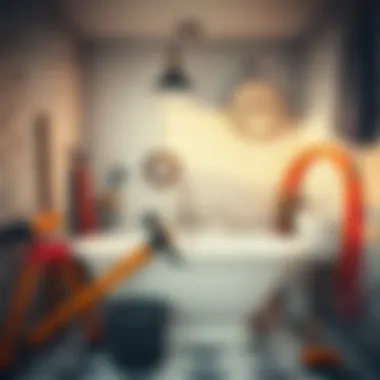
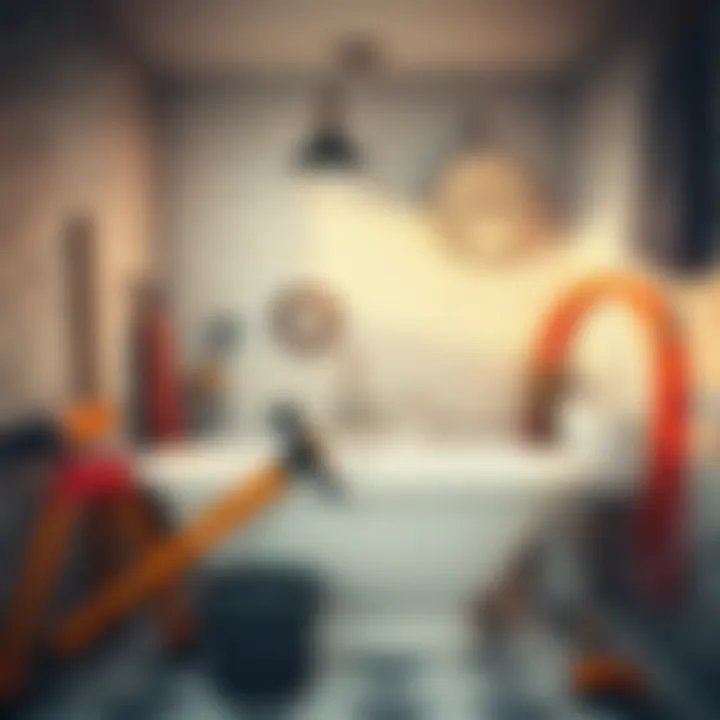
There are several elements to consider in this area that contribute to both the cost and the long-term satisfaction with your new bathroom.
Common Fixture Options
Toilets
Toilets, often overlooked in favor of flashier items, are a cornerstone of bathroom function. When deciding on a toilet, key characteristics include water efficiency, comfort height, and design style. A low-flow toilet can save on water bills and is often a popular choice for environmentally-conscious homeowners.
A unique feature of modern toilets is the existence of models with built-in bidets, offering hygiene and comfort without needing additional installations. These can come at a higher price but tend to be seen as a worthwhile investment for many.
However, one must consider the installation requirements, as some designs can pose more challenges than typical models. In short, if you’re looking for a beneficial choice, modern low-flow toilets with additional features can tick a lot of boxes for both performance and budget relevance.
Sinks
Sinks serve as practical and visual focal points. When evaluating sink options, pay close attention to size, style, and material. A popular choice among homeowners is the vessel sink, which sits above the counter, providing a unique design flair.
One attractive feature of vessel sinks is the variety of materials available, from ceramic to glass, allowing for personalized expression in design. However, keep in mind that vessel sinks may require additional counter space and can sometimes be harder to clean.
Ultimately, choosing sinks gives an opportunity for homeowners to align functionality with style while considering install costs and water efficiency.
Bathtubs vs. Showers
The debate between bathtubs and showers is one that largely influences the bathroom design and costs. A key characteristic of a bathtub is its ability to offer a relaxing soak after a long day. Many families with small children also find value in having a tub for bath time.
Showers, on the other hand, tend to save space and, depending on the design, can be more accessible for elderly individuals. A unique advantage of modern showers is the option for walk-in designs that provide a sleek look and easy access.
While bathtubs might tend to cost more due to installation and space requirements, showers can lead to lower water use, which might appeal to the eco-conscious. Choosing between these fixtures often comes down to individual lifestyle needs and how they will align with the overall renovation budget.
High-End vs. Budget Materials
Cost-Benefit Analysis
With any renovation project, performing a cost-benefit analysis is crucial. This analysis helps evaluate the initial costs of fixtures against their lifespan and maintenance needs. High-end materials like granite countertops or custom fixtures may require a heftier upfront investment but often pay off in durability and aesthetic appeal.
In contrast, opting for budget materials could save cash initially but may incur additional costs in the long run due to repairs or replacements. A quality analysis can inform where it’s wise to splurge versus when it’s better to save, leading to more informed choices.
Durability Considerations
When selecting materials, durability should be top of mind. Options such as porcelain tiles and solid surface countertops stand up to moisture and humidity more effectively than other materials, ensuring that they last longer and thus contribute to overall cost efficiency.
While a gorgeous marble countertop might offer aesthetic appeal, it may also be prone to stains and etching. Exploring the longevity of different materials aids in selecting the ones that will stand the test of time while fitting within your budget constraints.
Labor Costs and Professional Help
When embarking on a bathroom renovation, understanding labor costs is vital. Often, homeowners may underestimate this aspect, thinking they only need to account for materials and design. However, labor accounts for a significant portion of the total renovation cost. Hiring professionals can ensure that the work is done correctly and meets local building codes. That said, the choice between doing it yourself or enlisting experts also hinges on skill level, time availability, and the complexity of the project.
DIY vs. Hiring Professionals
Choosing between the do-it-yourself route and hiring professionals is not straightforward. Some homeowners fancy themselves as handy and might enjoy taking on projects like installing a new sink or painting the walls. But let’s face facts; plumbing and electrical work require specific expertise.
By trying to tackle these yourself, you may save some bucks initially, but there’s a real risk of making errors that could lead to costly repairs later on. House repairs do not always go as planned, and a single glitch could turn your simple project into a cascade of unforeseen expenses. So, weigh the pros and cons. If your skills are on par, DIY can be budget-friendly. If not, professionals may save you money and hassle in the long run.
Understanding Labor Rates
Navigating the various labor rates can be tricky. Different contractors have different pricing structures, which can affect your overall budget.
Hourly vs. Contract Rates
When it comes to pricing, understanding hourly rates versus contract rates is crucial. Hourly rates mean you are paying the worker for the amount of time they spend on the job, which can quickly add up, particularly if the project takes longer than expected. This approach can be beneficial, as you have more flexibility to terminate services should you find the quality lacking. However, the downside is the unpredictability of how long the renovation might take.
Conversely, contract rates often encompass the entire project, giving you a fixed quote upfront. This offers peace of mind regarding your budget, but it can be somewhat risky if the contractor lacks experience or underestimates the work required.
Task-Specific Pricing
Another pricing structure, task-specific pricing, can also play a role in determining labor costs. This model allows you to pay for specific tasks instead of an overall project. For instance, if you only need tile work done, you’d only pay for that specific task, possibly saving you a bit of change.
However, this can also lead to fragmentation in your renovation. Different contractors might be involved in various tasks, leading to miscommunication and potential delays. A single contractor managing the whole project might ensure a smoother process, but at a higher cost. On the other hand, task-specific pricing could provide the opportunity to choose specialists for certain jobs, which can lead to a higher quality of work in those areas.
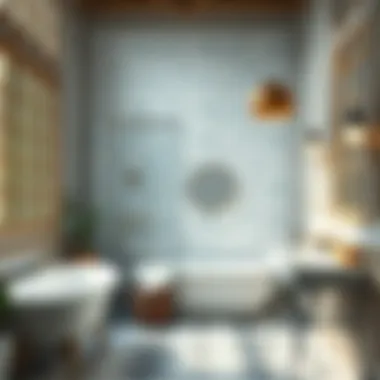
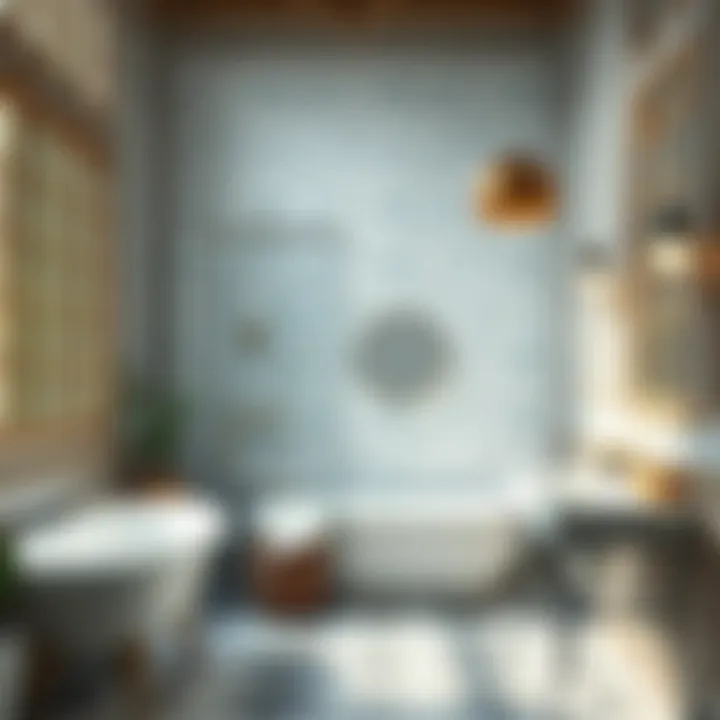
In summary, labor costs play a considerable role in shaping your bathroom renovation budget. Understanding the dynamics of DIY methods versus hiring professionals is essential. Moreover, take time to familiarize yourself with hourly versus contract rates, including the potential advantages and disadvantages of task-specific pricing. All these elements have a direct impact on both the cost and the success of your renovation project.
Navigating the Hidden Costs
When tackling a bathroom renovation, homeowners often focus on the obvious expenses like tiles, fixtures, and labor. However, hidden costs can sneak up on you, often leaving a dent in your budget. Understanding these hidden fees is crucial, not just to avoid surpassing your financial limits, but also to ensure the renovation meets your expectations without unanticipated compromises.
Hidden costs can stem from a variety of sources, each with its uniqueness and implications. They can affect the scope of your project and your overall satisfaction with the final result. So, let’s dive into two of the most common hidden costs: permitting and inspection fees and unexpected repairs.
Permitting and Inspection Fees
Before starting any significant remodeling project, it’s often required to obtain permits. These are usually necessary for structural alterations or plumbing work. Depending on your local regulations, failing to secure the proper permits may result in fines or even having to redo completed work.
- Cost Implications: Permit costs can vary widely based on location and the complexity of the work being undertaken. In urban areas, these fees can be higher, while rural regions might require less. Budgeting for $100 to $500 is a sound practice, but it's wise to consult local codes to get precise figures.
- Importance of Inspections: Alongside permits, don’t forget about inspection fees. These are often mandated to ensure that the work meets safety standards. While they might seem like a bummer, inspections provide the benefit of peace of mind regarding the structural integrity and safety of your bathroom renovation.
Unexpected Repairs and Changes
Unexpected repairs can throw a wrench in your carefully laid plans. It is essential to keep a contingency fund set aside—generally 10% to 20% of the total budget—for these unforeseen expenses.
Structural Issues
Hidden structural problems can emerge during a remodel, particularly in older homes. This includes rotting floorboards, failing support beams, or even issues with foundation stability. It’s one of those things that can’t be seen with a casual glance, but once discovered, it can not be ignored.
- Key Characteristics: These structural items require immediate attention and can add significantly to overall costs. Sometimes what seems minor can escalate quickly if not addressed promptly.
- Advantages and Disadvantages: On the upside, fixing structural issues can enhance safety and prolong the life of your renovation. However, it’s a bitter pill because it can inflate your budget, leading to stress and potential delays.
Plumbing Complications
Nothing can derail a bathroom remodel faster than plumbing issues. From outdated piping to leaks, these complications throw a shoddy wrench into even the most straightforward of plans.
- Key Considerations: Older homes often sport outdated plumbing, which might not be up to current standards. Any renovation should ideally include an assessment of these systems. Addressing plumbing issues during the renovation can stave off more costly repairs down the line.
- Unique Features: Navigating plumbing complications while renovating offers a chance to upgrade systems, potentially improving water efficiency and overall performance.
Ultimately, the hidden costs of bathroom renovation aren't just sneaky line items on a budget. They are considerations that, when understood and planned for, can prevent stress and dissatisfaction down the road. Ensure you do your homework on permits, inspections, and potential repairs to enjoy your newly renovated space without the lurking surprises.
Maximizing Value in Your Bathroom Renovation
When delving into the subject of bathroom renovations, it's crucial to focus not just on the costs involved but also on how to get the most bang for your buck. Maximizing value in your bathroom renovation means making strategic choices that will not only enhance the aesthetics and functionality of the space but also ensure that your investment pays dividends in terms of usability and potential market value.
Cost-Effective Design Strategies
Prioritizing Essential Upgrades
One of the smartest moves you can make during a renovation project is prioritizing essential upgrades. This means focusing your time and resources on features that truly enhance the bathroom's function. For example, investing in high-quality plumbing fixtures can reduce long-term maintenance costs and improve water efficiency.
The key characteristic of this approach is understanding that not all upgrades are equal. Spending lavishly on luxury items can be alluring, but what really counts are the upgrades that make a tangible difference in daily life. This is very beneficial because it keeps the project within budget while achieving significant improvements.
Unique features of prioritizing essential upgrades include improved energy efficiency and enhanced durability. However, the flip side can be the potential limit on aesthetic choices. In blending utility with beauty, prioritizing critical upgrades paves the path for a bathroom that is not only functional but also stylish.
Repurposing Existing Materials
Another clever strategy lies in repurposing existing materials. This can mean refurbishing cabinets instead of replacing them or using leftover tiles for a backsplash. This approach speaks volumes about cost-effectiveness while still allowing for creative expression.
The standout trait of repurposing is its ability to give a second life to items that might otherwise end up in a landfill. It's a sustainable choice that not only saves money but also adds character to the design. That vintage cabinet could become the highlight of your new bathroom!
While this is a beneficial choice, it’s essential to evaluate the condition of the materials you're planning to reuse. There can be disadvantages if they require extensive repairs or adjustments, but with careful planning, the advantages of uniqueness and cost savings often outweigh the cons.
Long-Term Return on Investment
Market Value Considerations
When thinking about bathroom renovations, it’s hard to understate the importance of market value considerations. A well-executed bathroom remodel can significantly boost your home’s overall value, making it an appealing target for potential buyers.
One notable aspect is the return on investment (ROI). Usually, bathroom remodels tend to recoup a substantial portion of costs upon resale. This makes sound planning critical not just for personal enjoyment but also for financial gain.
The unique feature here is that well-chosen updates—like modern fixtures or efficient layouts—can elevate your home’s status in a competitive market. On the downside, neglecting the market trends can lead to overspending on options that don’t resonate with buyers. Keeping an eye on what’s trendy without sacrificing personal taste is a delicate balance you have to strike.
Daily Usability Enhancements
Last but not least, we must consider daily usability enhancements in the context of your renovation. It’s all about crafting a space that not only looks good but is also user-friendly day to day. Think of features such as non-slip flooring, accessible layouts, or more storage options. These additions can vastly improve how you experience your bathroom, making mundane routines feel more like a joy than a chore.
The high point of this focus is that usability should be an integral part of your design discussion. Functional enhancements, while they may not directly translate to market value, can greatly boost your quality of life.
However, prioritizing usability can sometimes lead to compromises in style. Striking that balance is what will ensure that you don't just have a pretty bathroom, but one that serves you well for years to come.
In summary, maximizing value in your bathroom renovation is not a one-dimensional task. It requires a comprehensive approach that consumes various factors such as budget constraints, market realities, and personal preferences, all culminating in a transformative and rewarding experience.



